Effect of Different Cavity Disinfectants on Adhesion to Dentin of Permanent Teeth
Abstract
1. Introduction
2. Materials and Methods
3. Results
4. Discussion
5. Conclusions
Author Contributions
Funding
Institutional Review Board Statement
Informed Consent Statement
Data Availability Statement
Conflicts of Interest
References
- Kazeminia, M.; Abdi, A.; Shohaimi, S.; Jalali, R.; Vaisi-Raygani, A.; Salari, N.; Mohammadi, M. Dental caries in primary and permanent teeth in children’s worldwide, 1995 to 2019: A systematic review and meta-analysis. Head Face Med. 2020, 16, 22. [Google Scholar] [CrossRef] [PubMed]
- Young, D.; Nový, B.; Zeller, G.; Hale, R.; Hart, T.; Truelove, E.; Ekstrand, K.; Featherstone, J.; Fontana, M.; Ismail, A.; et al. The American dental association caries classification system for clinical practice: A report of the American Dental Association council on scientific affairs. J. Am. Dent. Assoc. 2015, 146, 79–86. [Google Scholar] [CrossRef] [PubMed]
- Takahashi, N.; Nyvad, B. The role of bacteria in the caries process: Ecological perspectives. J. Dent. Res. 2011, 90, 294–303. [Google Scholar] [CrossRef] [PubMed]
- Argimón, S.; Caufield, P. Distribution of putative virulence genes in Streptococcus mutans strains does not correlate with caries experience. J. Clin. Microbiol. 2011, 49, 984–992. [Google Scholar] [CrossRef]
- Das Gupta, S.; Killenberger, M.; Tanner, T.; Rieppo, L.; Saarakkala, S.; Heikkilä, J.; Anttonen, V.; Finnilä, M. Mineralization of dental tissues and caries lesions detailed with Raman microspectroscopic imaging. Analyst 2021, 146, 1705–1713. [Google Scholar] [CrossRef]
- Reddy, M.; Mahesh, M.; Bhandary, S.; Pramod, J.; Shetty, A. Evaluation of effect of different cavity disinfectants on shear bond strength of composite resin to dentin using two-step self-etch and one-step self-etch bonding systems: A comparative in vitro study. J. Contemp. Dent. Pract. 2013, 14, 275–280. [Google Scholar]
- Davalloo, R.; Tavangar, M.; Ebrahimi, H.; Darabi, F.; Mahmoudi, S. In Vitro Comparative Evaluation of Newly Produced Desensitizer, Chlorhexidine and Gluma on Bond Strength and Bond Longevity of Composite to Dentin. J. Dent. 2020, 21, 111–118. [Google Scholar]
- Hassan, A.M.; Goda, A.A.; Baroudi, K. The effect of different disinfecting agents on bond strength of resin composites. Int. J. Dent. 2014, 2014, 231235. [Google Scholar]
- Coelho, A.; Amaro, I.; Rascão, B.; Marcelino, I.; Paula, A.; Saraiva, J.; Spagnuolo, G.; Ferreira, M.M.; Marto, C.M.; Carrilho, E. Effect of Cavity Disinfectants on Dentin Bond. Strength and Clinical Success of Composite Restorations—A Systematic Review of In Vitro, In Situ and Clinical Studies. Int. J. Mol. Sci. 2020, 22, 353. [Google Scholar] [CrossRef]
- Coelho, A.; Amaro, I.; Apolónio, A.; Paula, A.; Saraiva, J.; Ferreira, M.M.; Marto, C.M.; Carrilho, E. Effect of Cavity Disinfectants on Adhesion to Primary Teeth—A Systematic Review. Int. J. Mol. Sci. 2021, 22, 4398. [Google Scholar] [CrossRef]
- Ting, S.; Chowdhury, A.A.; Pan, F.; Fu, J.; Sun, J.; Kakuda, S.; Hoshika, S.; Matsuda, Y.; Ikeda, T.; Nakaoki, Y.; et al. Effect of remaining dentin thickness on microtensile bond strength of current adhesive systems. Dent. Mater. J. 2015, 34, 181–188. [Google Scholar] [CrossRef] [PubMed]
- ISO/TS 11405:2015; Dental Materials—Testing of Adhesion to Tooth Structure. International Organization for Standardization: Geneva, Switzerland, 2015.
- Mohammad, E.E.C.; Amir, A.; Soodabeh, K.; Ahmad, A. Effect of chlorhexidine on the shear bond strength of self-etch adhesives to dentin. Afr. J. Biotechnol. 2011, 10, 10054–10057. [Google Scholar] [CrossRef][Green Version]
- Jowkar, Z.; Farpour, N.; Koohpeima, F.; Mokhtari, M.J.; Shafiei, F. Effect of silver nanoparticles, zinc oxide nanoparticles and titanium dioxide nanoparticles on microshear bond strength to enamel and dentin. J. Contemp. Dent. Pract. 2018, 19, 1404–1411. [Google Scholar] [PubMed]
- Simões, D.M.S.; Basting, R.T.; Amaral, F.L.B.; Turssi, C.P.; França, F.M.G. Influence of chlorhexidine and/or ethanol treatment on bond strength of an etch-and-rinse adhesive to dentin: An in vitro and in situ study. Oper. Dent. 2014, 39, 64–71. [Google Scholar] [CrossRef] [PubMed]
- Bin-Shuwaish, M.; AlHussaini, A.; AlHudaithy, L.; AlDukhiel, S.; Al-Jamhan, A. An in vitro evaluation of microleakage of resin-based composites bonded to chlorhexidine-pretreated dentin by different protocols of a universal adhesive system. Saudi Dent. J. 2021, 33, 503–510. [Google Scholar] [CrossRef] [PubMed]
- Prati, C.; Chersoni, S.; Pashley, D.H. Effect of removal of surface collagen fibrils on resin-dentin bonding. Dent. Mater. 1999, 15, 323–331. [Google Scholar] [CrossRef]
- Bueno, M.D.F.T.; Basting, R.T.; Turssi, C.P.; França, F.M.G.; Amaral, F.L.B. Effect of 2% chlorhexidine digluconate application and water storage on the bond strength to superficial and deep dentin. J. Adhes. Sci. Technol. 2015, 29, 1258–1267. [Google Scholar] [CrossRef]
- Sun, Q.; Gu, L.; Quan, J.; Yu, X.; Huang, Z.; Wang, R.; Mai, S. Epigallocatechin-3-gallate enhance dentin biomodification and bond stability of an etch-and-rinse adhesive system. Int. J. Adhes. Adhes. 2018, 80, 115–121. [Google Scholar] [CrossRef]
- Gonçalves, M.; Corona, S.A.M.; Palma-Dibb, R.G.; Pécora, J.D. Influence of pulse repetition rate of Er:YAG laser and dentin depth on tensile bond strength of dentin-resin interface. J. Biomed. Mater. Res. A 2008, 86, 477–482. [Google Scholar] [CrossRef]
- Alaghehmand, H.; Nasrollah, F.N.; Nokhbatolfoghahaei, H.; Fekrazad, R. An in vitro comparison of the bond strength of composite to superficial and deep dentin, treated with Er:YAG laser irradiation or acid-etching. J. Lasers Med. Sci. 2016, 7, 167–171. [Google Scholar] [CrossRef][Green Version]
- Karadas, M.; Çaglar, I. The effect of Er:YAG laser irradiation on the bond stability of self-etch adhesives at different dentin depths. Lasers Med. Sci. 2017, 32, 967–974. [Google Scholar] [CrossRef] [PubMed]
- Lenzi, T.L.; Tedesco, T.K.; Soares, F.Z.M.; Loguercio, A.D.; Rocha, R.O. Chlorhexidine does not increase immediate bond strength of etch-and-rinse adhesive to caries-affected dentin of primary and permanent teeth. Braz. Dent. J. 2012, 23, 438–442. [Google Scholar] [CrossRef] [PubMed]
- Kucukyilmaz, E.; Savas, S.; Akcay, M.; Bolukbasi, B. Effect of silver diamine fluoride and ammonium hexafluorosilicate applications with and without Er:YAG laser irradiation on the microtensile bond strength in sound and caries-affected dentin. Lasers Surg. Med. 2016, 48, 62–69. [Google Scholar] [CrossRef]
- ISO 3696:1987; Water for Analytical Laboratory Use—Specification and Test Methods. International Organization for Standardization: Geneva, Switzerland, 1987.
- Zhou, J.; Tan, J.; Yang, X.; Xu, X.; Li, D.; Chen, L. MMP-Inhibitory effect of chlorhexidine applied in a self-etching adhesive. J. Adhes. Dent. 2011, 13, 111–115. [Google Scholar] [PubMed]
- Osorio, R.; Yamauti, M.; Osorio, E.; Ruiz-Requena, M.E.; Pashley, D.; Tay, F.; Toledano, M. Effect of dentin etching and chlorhexidine application on metalloproteinase-mediated collagen degradation. Eur. J. Oral Sci. 2011, 119, 79–85. [Google Scholar] [CrossRef] [PubMed]
- Montagner, A.F.; Sarkis-Onofre, R.; Pereira-Cenci, T.; Cenci, M.S. MMP Inhibitors on Dentin Stability: A Systematic Review and Meta-analysis. J. Dent. Res. 2014, 93, 733–743. [Google Scholar] [CrossRef] [PubMed]
- Ozsoy, A.; Erdemir, U.; Yucel, T.; Yildiz, E. Effects of cavity disinfectants on bond strength of an etch-and-rinse adhesive to water- or ethanol-saturated sound and caries-affected dentin. J. Adhes. Sci. Technol. 2015, 29, 2551–2564. [Google Scholar] [CrossRef]
- Kiuru, O.; Sinervo, J.; Vähänikkilä, H.; Anttonen, V.; Tjäderhane, L. MMP Inhibitors and Dentin Bonding: Systematic Review and Meta-Analysis. Int. J. Dent. 2021, 2021, 9949699. [Google Scholar] [CrossRef]
- Fernandes, G.L.; Strazzi-Sahyon, H.B.; Suzuki, T.Y.U.; Briso, A.L.F.; dos Santos, P.H. Influence of chlorhexidine gluconate on the immediate bond strength of a universal adhesive system on dentine subjected to different bonding protocols: An in vitro pilot study. Oral Health Prev. Dent. 2020, 18, 71–76. [Google Scholar]
- Manso, A.P.; Grande, R.H.M.; Bedran-Russo, A.K.; Reis, A.; Loguercio, A.D.; Pashley, D.H.; Carvalho, R.M. Can 1% chlorhexidine diacetate and ethanol stabilize resin-dentin bonds? Dent. Mater. 2014, 30, 735–741. [Google Scholar] [CrossRef]
- Rechmann, P.; Bartolome, N.; Kinsel, R.; Vaderhobli, R.; Rechmann, B.M.T. Bond strength of etch-and-rinse and self-etch adhesive systems to enamel and dentin irradiated with a novel CO2 9.3 µ m short-pulsed laser for dental restorative procedures. Lasers Med. Sci. 2017, 32, 1981–1993. [Google Scholar] [CrossRef] [PubMed]
- Briso, A.; Silva, Ú.; Souza, M.; Rahal, V.; Júnior, E.; Cintra, L. A clinical, randomized study on the influence of dental whitening on Streptococcus mutans population. Aust. Dent. J. 2018, 63, 94–98. [Google Scholar] [CrossRef] [PubMed]
- Alkahtani, R.; Stone, S.; German, M.; Waterhouse, P. A review on dental whitening. J. Dent. 2020, 100, 103423. [Google Scholar] [CrossRef] [PubMed]
- Tekçe, N.; Tuncer, S.; Demirci, M.; Balci, S. Do matrix metalloproteinase inhibitors improve the bond durability of universal dental adhesives? Scanning 2016, 38, 535–544. [Google Scholar] [CrossRef] [PubMed]
- Wang, J.; Song, W.; Zhu, L.; Wei, X. A comparative study of the microtensile bond strength and microstructural differences between sclerotic and Normal dentine after surface pretreatment. BMC Oral Health 2019, 19, 216. [Google Scholar] [CrossRef] [PubMed]
- Elkassas, D.W.; Fawzi, E.M.; El Zohairy, A. The effect of cavity disinfectants on the micro-shear bond strength of dentin adhesives. Eur. J. Dent. 2014, 8, 184–190. [Google Scholar] [CrossRef]
- Osorio, R.; Erhardt, M.C.G.; Pimenta, L.A.; Osorio, E.; Toledano, M. EDTA treatment improves resin-dentin bonds’ resistance to degradation. J. Dent. Res. 2005, 84, 736–740. [Google Scholar] [CrossRef]
- Sinha, D.J.; Jaiswal, N.; Vasudeva, A.; Garg, P.; Tyagi, S.P.; Chandra, P. Comparative Evaluation of the Effect of Chlorhexidine and Aloe barbadensis miller (Aloe vera) on Dentin Stabilization Using Shear Bond Testing. J. Conserv. Dent. 2016, 19, 406–409. [Google Scholar]
- Sinha, D.J.; Jandial, U.A.; Jaiswal, N.; Singh, U.P.; Goel, S.; Singh, O. Comparative evaluation of the effect of different disinfecting agents on bond strength of composite resin to dentin using two-step self-etch and etch and rinse bonding systems: An in-vitro study. J. Conserv. Dent. 2018, 21, 424–427. [Google Scholar]
- Ramasubrimanyan, T.S.; Sivakumar, V.T.; Thirumalai, A.V. Antimicrobial activity of Aloe vera (L) Burm. f. against pathogenic microorganisms. J. Biosci. Res. 2010, 1, 251–258. [Google Scholar]
- Bertolini, P.F.; Biondi Filho, O.; Pomilio, A.; Pinheiro, S.L.; Carvalho, M.S. Antimicrobial capacity of Aloe vera and propolis dentifrice against Streptococcus mutans strains in toothbrushes: An in vitro study. J. Appl. Oral Sci. 2012, 20, 32–37. [Google Scholar] [CrossRef][Green Version]
- Kudalkar, M.D.; Nayak, A.; Bhat, K.S.; Nayak, R.N. Effect of Azadirachta indica (Neem) and Aloe vera as compared to subantimicrobial dose doxycycline on matrix metalloproteinases (MMP)-2 and MMP-9: An in-vitro study. Ayu 2014, 35, 85–89. [Google Scholar] [CrossRef] [PubMed]
- Chiang, Y.S.; Chen, Y.L.; Chuang, S.F.; Wu, C.M.; Wei, P.J.; Han, C.F.; Lin, J.C.; Chang, H.T. Riboflavin-ultraviolet-A-induced collagen cross-linking treatments in improving dentin bonding. Dent. Mater. 2013, 29, 682–692. [Google Scholar] [CrossRef] [PubMed]
- Krifka, S.; Hiller, K.; Bolay, C.; Petzel, C.; Spagnuolo, G.; Reichl, F.; Schmalz, G.; Schweikl, H. Function of MAPK and downstream transcription factors in monomer-induced apoptosis. Biomaterials 2012, 33, 740–750. [Google Scholar] [CrossRef]
- Spagnuolo, G.; Desiderio, C.; Rivieccio, V.; Amato, M.; Rossetti, D.V.; A’Antò, V.; Schweikl, H.; Lupi, A.; Rengo, S.; Nocca, G. In vitro cellular detoxification of triethylene glycol dimethacrylate by adduct formation with N-acetylcysteine. Dent. Mater. 2013, 29, e153–e159. [Google Scholar] [CrossRef]


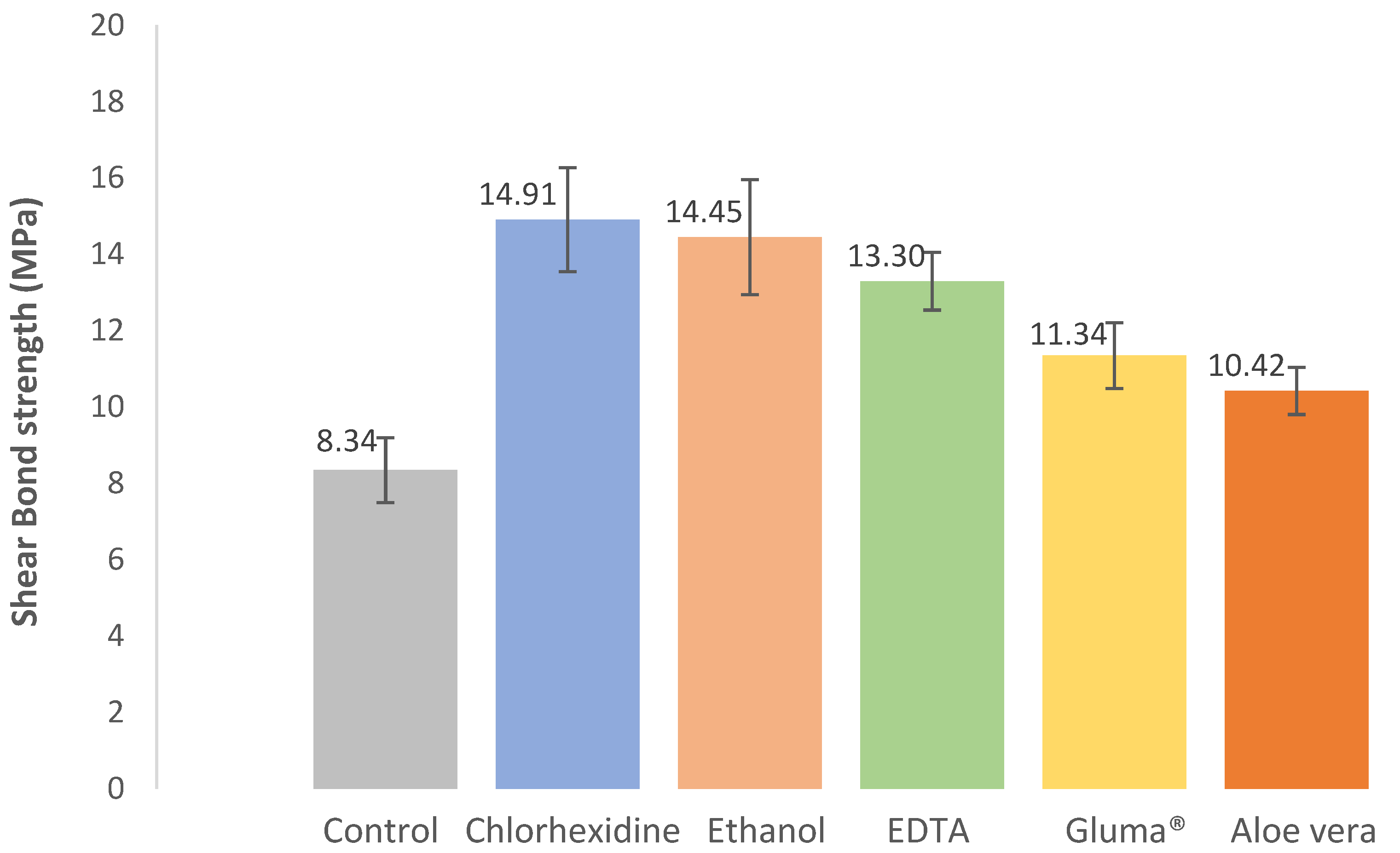
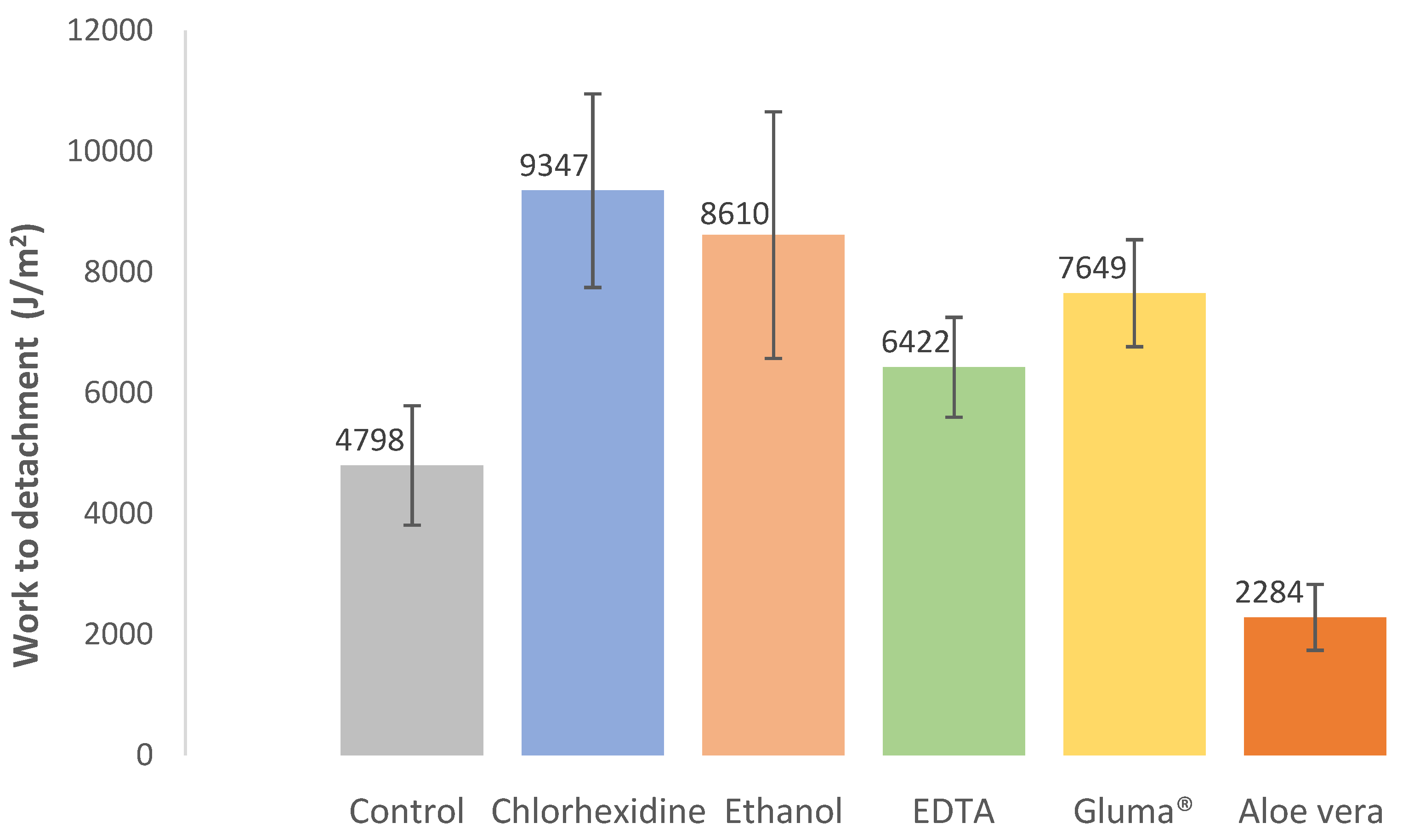

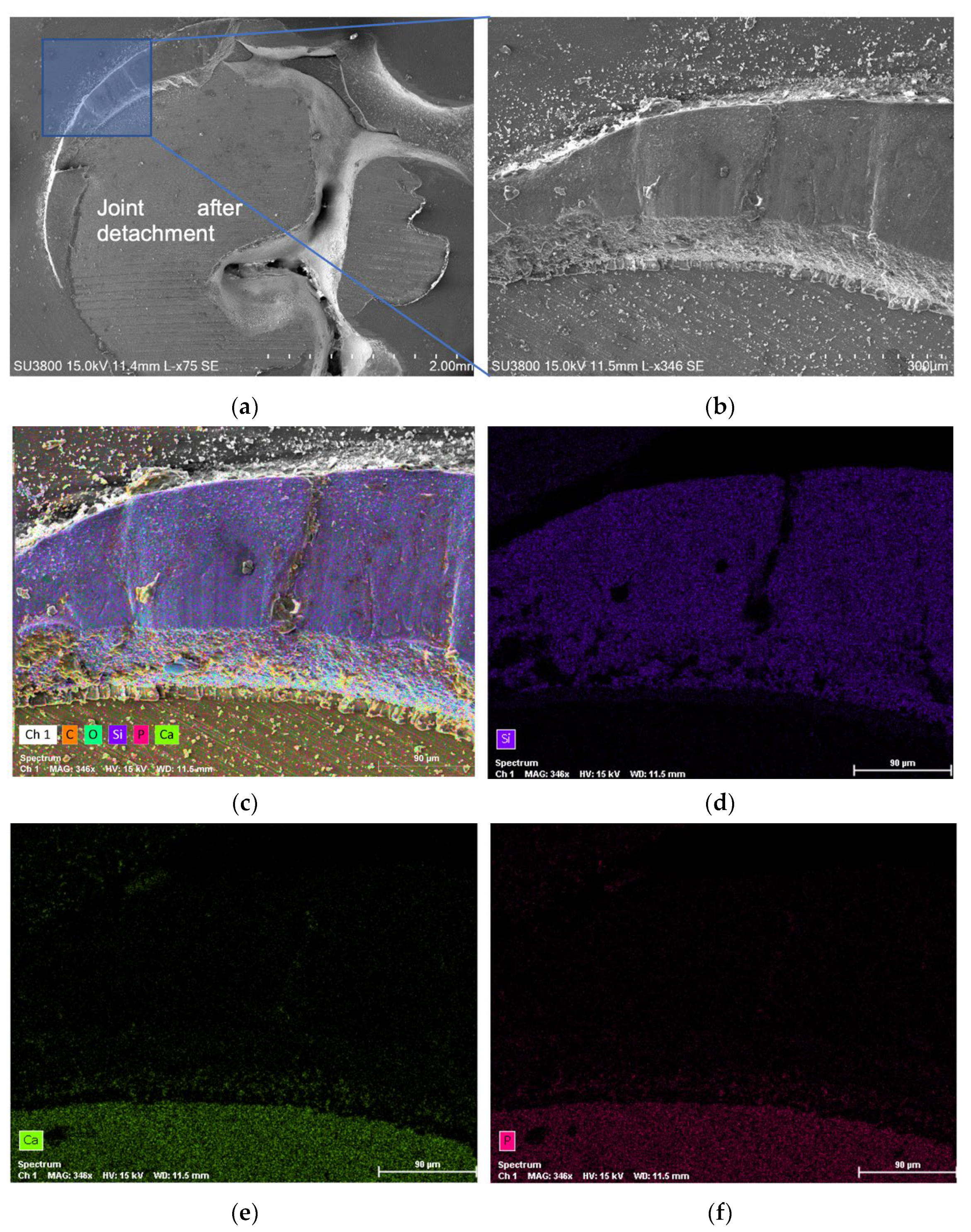
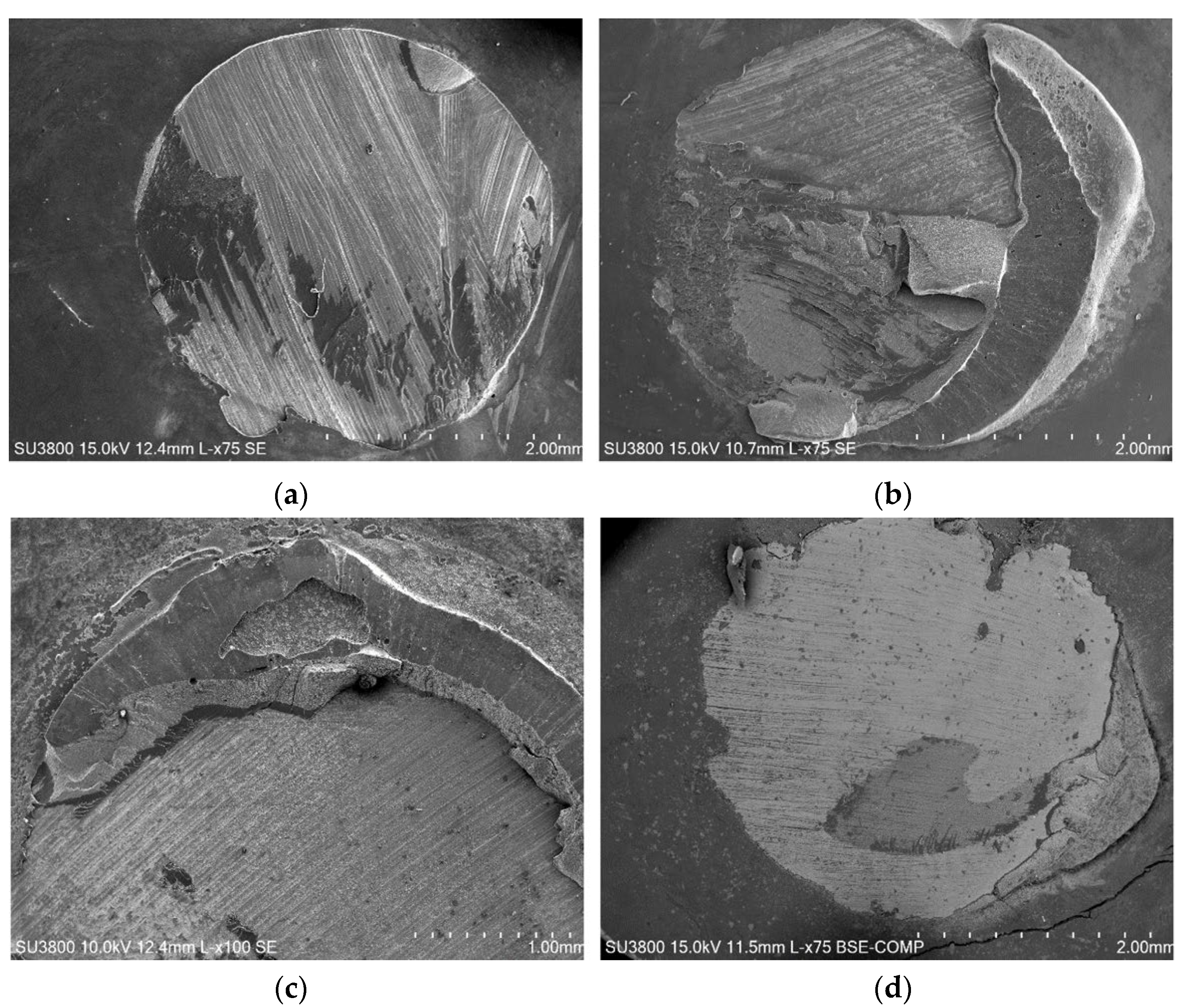
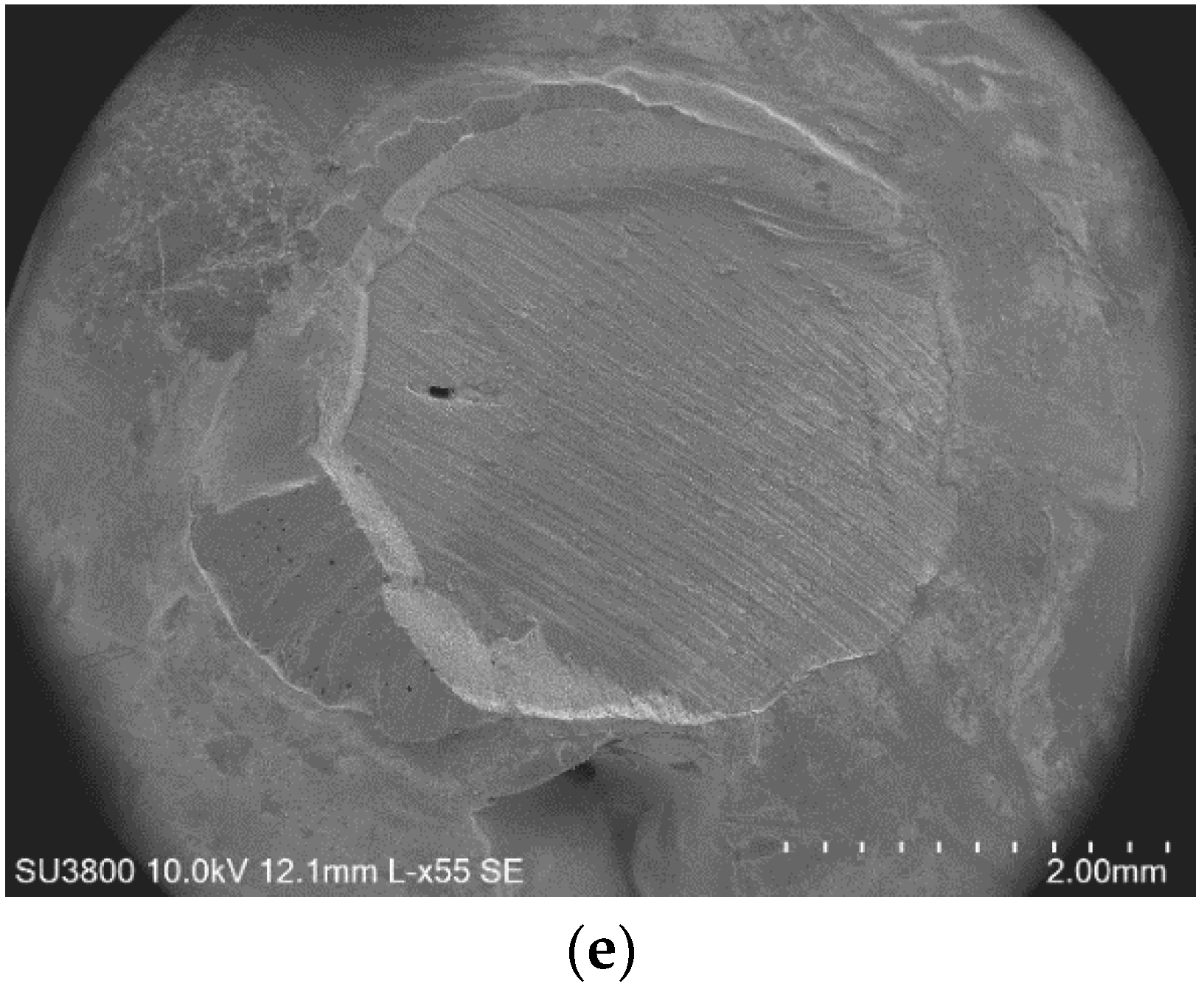
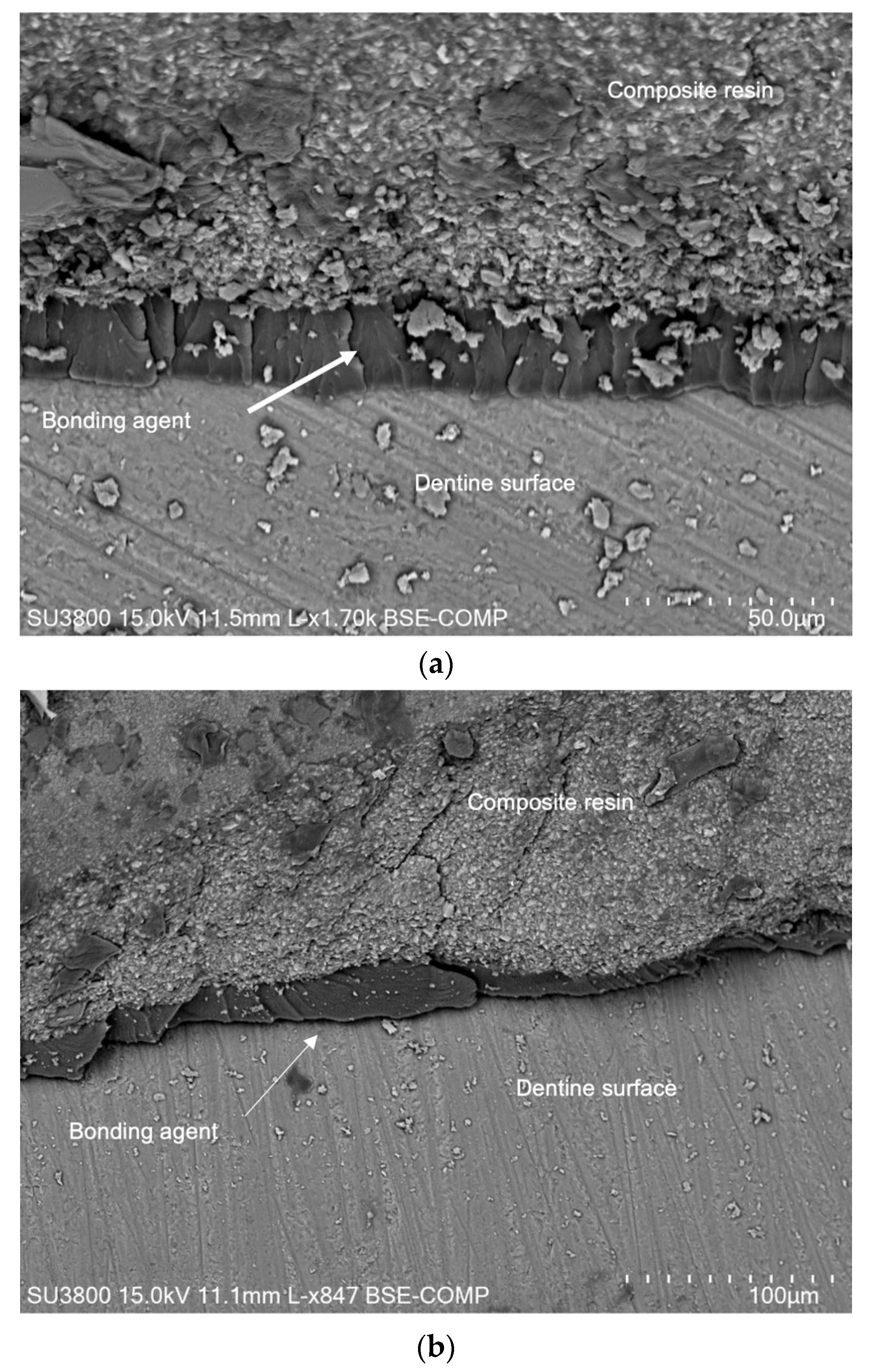
| Material | Composition | Lot | Manufacturer |
|---|---|---|---|
| Chlorhexidine | Water, glycerin, propylene glycol, 0.20% chlorhexidine digluconate, flavor (aroma), lactic acid, PEG-40 hydrogenated castor oil, potassium acesulfame, RED 40 (CI 16035), sodium benzoate | G0007 | Pierre Fabre, France |
| Aloe vera | Aloe barbadensis powder 200:1 | OABP101 | Herbs and Crops Overseas, India |
| EDTA | 17% EDTA, 10% carbamide peroxyde, glycerin, propylene glycol | 048148 | Laboratorios Clarben, Spain |
| Ethanol | 100% Ethanol | 493511 | Sigma-Aldrich Corporation, USA |
| Glutaraldehyde | 35% 2-hydroxyethyl methacrylate (HEMA); 5% Glutaraldehyde | K010536 | Heraeus, Germany |
| Group | Shear Bond Strength (MPa) | Shear Modulus (kPa) | Work to Detachment (J/m2) |
|---|---|---|---|
| Control | 8.34 ± 0.85 | 216.11 ± 19.65 | 4798.48 ± 990,19 |
| Chlorhexidine | 14.91 ± 1.36 | 189.64 ± 17.37 | 9347.06 ± 1603.92 |
| Ethanol | 14.45 ± 1.51 | 184.49 ± 20.14 | 8610.25 ± 2042.18 |
| EDTA | 13.30 ± 0.57 | 169.14 ± 18.16 | 6422.11 ± 827.59 |
| Gluma® | 11.34 ± 0.76 | 372.48 ± 22.31 | 7648.73 ± 885.66 |
| Aloe vera | 10.42 ± 0.62 | 317.50 ± 43.81 | 2283.63 ± 544.55 |
Publisher’s Note: MDPI stays neutral with regard to jurisdictional claims in published maps and institutional affiliations. |
© 2022 by the authors. Licensee MDPI, Basel, Switzerland. This article is an open access article distributed under the terms and conditions of the Creative Commons Attribution (CC BY) license (https://creativecommons.org/licenses/by/4.0/).
Share and Cite
Coelho, A.; Vilhena, L.; Antunes, M.; Amaro, I.; Paula, A.; Marto, C.M.; Saraiva, J.; Ferreira, M.M.; Carrilho, E.; Ramalho, A. Effect of Different Cavity Disinfectants on Adhesion to Dentin of Permanent Teeth. J. Funct. Biomater. 2022, 13, 209. https://doi.org/10.3390/jfb13040209
Coelho A, Vilhena L, Antunes M, Amaro I, Paula A, Marto CM, Saraiva J, Ferreira MM, Carrilho E, Ramalho A. Effect of Different Cavity Disinfectants on Adhesion to Dentin of Permanent Teeth. Journal of Functional Biomaterials. 2022; 13(4):209. https://doi.org/10.3390/jfb13040209
Chicago/Turabian StyleCoelho, Ana, Luís Vilhena, Maria Antunes, Inês Amaro, Anabela Paula, Carlos Miguel Marto, José Saraiva, Manuel Marques Ferreira, Eunice Carrilho, and Amílcar Ramalho. 2022. "Effect of Different Cavity Disinfectants on Adhesion to Dentin of Permanent Teeth" Journal of Functional Biomaterials 13, no. 4: 209. https://doi.org/10.3390/jfb13040209
APA StyleCoelho, A., Vilhena, L., Antunes, M., Amaro, I., Paula, A., Marto, C. M., Saraiva, J., Ferreira, M. M., Carrilho, E., & Ramalho, A. (2022). Effect of Different Cavity Disinfectants on Adhesion to Dentin of Permanent Teeth. Journal of Functional Biomaterials, 13(4), 209. https://doi.org/10.3390/jfb13040209











